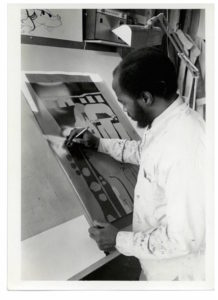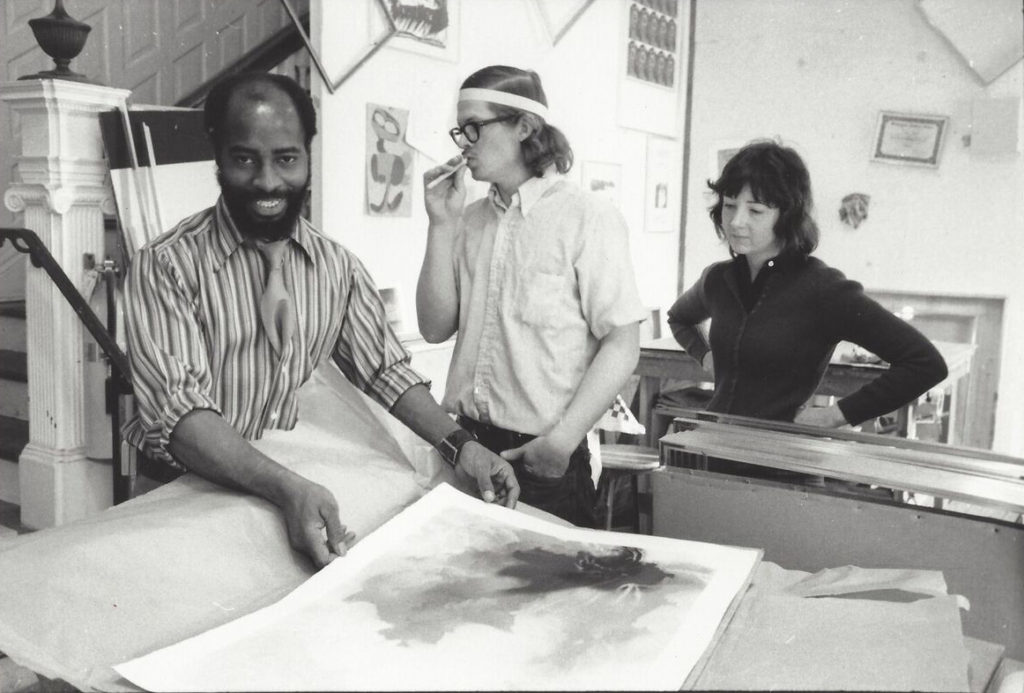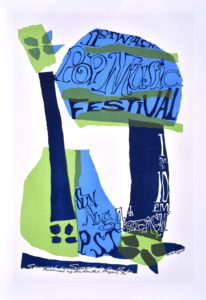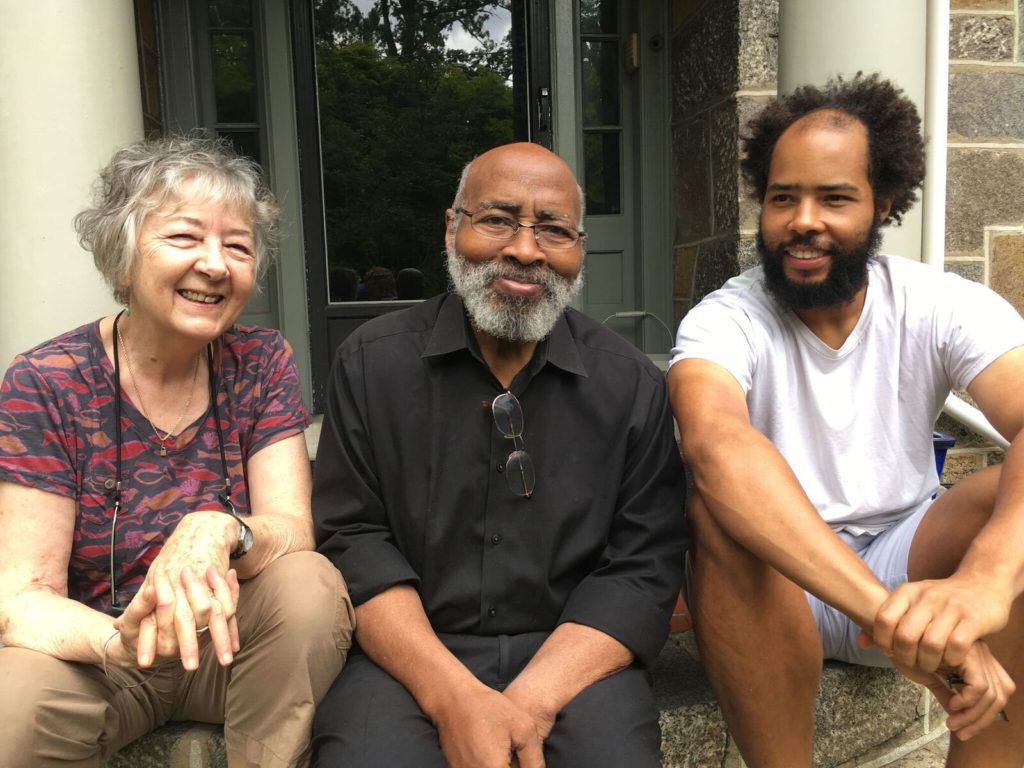On June 12, 2021, Hemphill Artworks will open its exhibit What’s Going Around: Lou Stovall & The Community Poster, 1967-1976. The works collected for the exhibit were all hand-printed by artist Lou Stovall here in DC. A small selection of posters and the exhibit catalog are available for purchase for a limited time at the DC History Center’s online store. At the DC History Center’s 2017 Making DC History Awards, Di and Lou Stovall were honored with the award for Distinction in Artistic Achievement. For the ceremony, the DC History Center produced this short biographical video.
Born in Athens, Georgia, in 1937, Lou Stovall moved with his family to Springfield, Massachusetts, in 1941 as part of the Great Migration, which brought thousands of African Americans from the South. Stovall first encountered silkscreen printmaking at age 15, while he was working after school at a Springfield grocery store. He was instantly inspired by this new medium and began assisting the store in all of its sign printing. He went on to pursue printmaking in his high school art classes, eventually winning a scholarship to attend the Rhode Island School of Design, where he studied briefly before transferring to Howard University.

At Howard, Stovall was a student of great figures in African American Art. His professors included James A. Porter, James Lesesne Wells, Lois Mailou Jones, and David Driskell. Through his friendships with activists like Stokely Carmichael, Stovall made silkscreen posters for various civil rights protests. Many posters were shipped south to aid in important demonstrations there. Stovall was inspired by an acute desire to work in the community and, thanks to his mentorships with Porter and Wells, began to innovate within the medium. The posters displayed in What’s Going Around reflect both of these calls to action: to seek a significant contribution to one’s social world, on the one hand, and to achieve formal perfection, on the other.
The earliest posters in the exhibit are from the fall of 1967, at a time when Stovall was printing in the evenings while working during the day making commercial signage at the Botkin Sign Shop near Howard University. These works were printed just weeks after President Lyndon Johnson appointed Walter E. Washington as DC’s first Mayor-Commissioner of the 20th century. The posters from 1967 set the tone for the exhibit, moving from themes of music to art to politics to theater to protest action. These works emerged in a city coming into its own, where activists fought for representation and a local civic administration. This movement is reflected in the Youth Pride poster—Buy Pride—made by Stovall to support future mayor Marion Barry’s influential job placement program. It’s also seen in the Charles Cassell campaign poster of 1968, printed to support Cassell’s campaign for a seat on the DC school board in DC’s first public election.

While these posters are made for a larger social world, they reflect the social community around printmaking. Silkscreen printing is a collaborative process, and Stovall’s posters reflect how he built relationships and partnerships as he grew in his own work. A pivotal change in Stovall’s life came in spring 1968, when, in the wake of the uprisings in response to the assassination of the Reverend Dr. Martin Luther King, Jr., he set up his first printmaking studio in downtown DC with musician Lloyd McNeill and artist and wife, Di Bagley Stovall. This central location allowed Stovall to seek out bigger commissions, broader collaborations, and teach and share the silkscreen art with more students and young artists. Stovall was invited in fall 1969 to operate the new experimental annex of the Corcoran School of Art in the building of the former Washington Gallery of Modern Art near Dupont Circle and collaborate in the process with artists of the Washington Color School.

Later, as he moved from making community posters to limited editions, Stovall’s work reflected the lively interchange of these years downtown. Ever committed to silkscreen, Stovall would go on to innovate important blending techniques in the medium. He carried these innovations through in his own work and also shared them with other artists he collaborated with including Jacob Lawrence, Sam Gilliam, Elizabeth Catlett, Robert Mangold, and others.
Even during this later period, Lou Stovall would still print for the community, making posters for social causes all the way up to the Occupy Wall Street movement. Now, at 84, Stovall is still working, focused primarily on silkscreen collage, while also constructing a new studio space for the purpose of exhibition, archiving and mentorship.
Sharing the art of silkscreen, the legacy of printmaking, the spirit of collaboration, and the history of DC cultural arts—these are the commitments of Stovall and his legacy. Over the next year, Lou Stovall’s work will be showcased in exhibitions at the Kreeger Museum in DC and the Georgia Museum of Art in Athens, GA, as well as in a new publication with Georgetown University Press that will bring new light to his achievements and continue the conversation around printmaking in Washington, DC.

Photos and images courtesy, Will Stovall